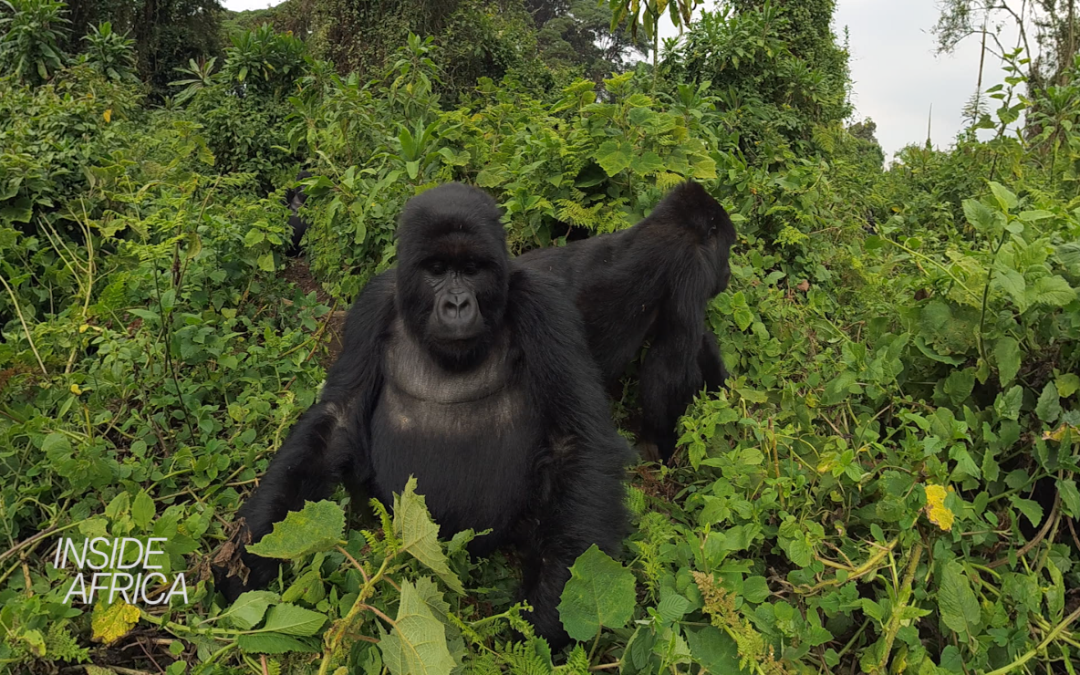South Africa is renowned for its wildlife and biodiversity. In the country’s southwestern corner, the cape floristic region is notable for its incredible assortment of plant species. Thirty percent of the plants here, are found nowhere else on earth, but many of them are vanishing due to illegal poaching driven largely by online demand.
In the latest episode of Inside Africa, CNN visits the Karoo Desert National Botanical Garden in the town of Worcester, where, alongside a wide variety of arid and semi-arid plants on display, there is also an ever-increasing supply of seized plants. Emily Kudze was a part of the team that co-ordinated the National Response Strategic and Action Plan addressing the illegal trade of succulent plants in South Africa. She explains how the plan is trying to stop illegal plant harvesting, “Some of the plants are being transported using trucks so the weighbridges are an indication that there’s something suspicious in the trucks, so they do searches and that’s when they find these plants […]. In the beginning stages our survival rate was very little but over the years we went from only ten percent survival rate to now we’ve got eighty percent are surviving.”
Wildlife trade researcher Dominique Prinsloo has observed a change in the illegal trade in succulent plants over the last few years, telling CNN, “Conservationists, criminologists, botanists, programmers have come together to develop an inter-disciplinary approach to combating the illegal trade in plants online.” This is Flora-Guard, an algorithm that aims to protect succulents by scanning online listings for vulnerable and endangered species, identifying adverts for plants that may have been illegally harvested.
Prinsloo explains the algorithm further, “It comprises machine learning and data visualisation that allows the user, be it a researcher or a law enforcement analyst, to be able to track and monitor and extract information on plant species on specific platforms like an e-commerce platform and potentially social media as well, and so with that it enables law enforcement to have a much better understanding of what is happening online.”
Etwin Aslander, a horticulturist at Cape Succulent Seeds, aims to reduce the demand for wild-collected plants by offering ethically-propagated succulents, cultivated responsibly to combat illegal poaching and support biodiversity conservation. He explains this, “The main thing is making plants available, if there’s no plants on the market then obviously the first thing they will do is collect it themselves. When a plant is rare it pushes up the prices and then the incentive of going to poach it is extremely high. If it’s available in the trade in fair quantities then you know we can keep the price down and it will just be cheaper to just buy them and export them, then they are less likely to come all the way here and take our plants.”
Alongside the issue of rare plant poaching is rhino poaching. South Africa has more rhinos than any other country in the world and records the highest number of rhino poaching deaths every year. But there may be hope for these magnificent creatures, as new and innovative anti-poaching strategies emerge.
Professor James Larkin, director of the radiation and health physics unit at the University of The Witwatersrand, has dedicated his career to radiation protection and nuclear security education. He tells CNN about his project to incorporate radioisotopes into rhino horns to reduce poaching, “Globally there are installed radiation detection monitors at harbours, airports, and border crossings that over the years have been put into place to prevent nuclear terrorism. If we put just enough radioactive material into the horn, we can use this already established system to be able to detect horn as it’s moved across international borders.” This method is designed to devalue the horns in the eyes of poachers and to enhance detection of illegally trafficked horns. It is also made safe for the rhinos.
However, as with so many innovations in conservation, not everyone in the wider community has immediately embraced the project. Larkin explains, “Because it’s so far out, so kind of left field, a lot of the people need to talk with us more to understand what it is because they don’t understand radiation and throw their hands up in horror and say ‘oh no, no, no you mustn’t do this’. To put it in layman’s terms it, we are giving these rhinos the equivalent of about two CT scans a year, that’s the levels, the dose that we are planning to give, and my belief is there will be no harm to these animals.”
In Johannesburg, pioneering studio, Habitat XR, uses advanced technologies like virtual reality and 360-degree video, augmented reality, and holograms to create global awareness and foster empathy for wildlife and for conservation. Their CEO, Ulrico Grech-Cumbo explains how Habitat XR brings audiences face-to-face with endangered species and remote ecosystems, “The real power in immersive media lies in the fact that when a person is experiencing that story, they feel like they’re an active participant. We use a phrase called ‘telepresence’ which is really defined as the mind’s belief that the body is physically somewhere else.”
Expanding its mission, Grech-Cumbo and his team launched ‘The Habitat Nature Parks Foundation’ in 2019. The foundation’s flagship project, “The Zoo of the Future”, seeks to create accessible, tech-driven experiences that connect people to wildlife. Grech-Cumbo explains, “This is really all about reinventing environmental education for our modern world and we feel like it’s an incredibly vital point in human history for us to really connect with the complex conservation topics that we are currently dealing with.”
Looking forward, Habitat XR believes that advancements in technology can be a good thing for both people and nature. Cinematic VR Artisan for Habitat XR, Karien Van Biljon, tells CNN, “We’re in such a unique space where the people that do watch our things can make changes and knowing that the start of someone’s change to help nature starts with my work or our big projects is one of the best feelings. I might not be on the front lines working in conservation with anti-poaching teams but I’m working to change the fundamental way people think of nature.”
These interviews were featured on the latest episode of Inside Africa on CNN International


